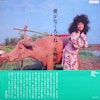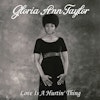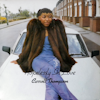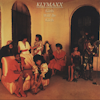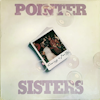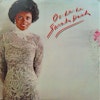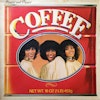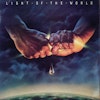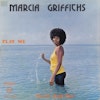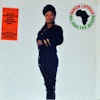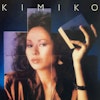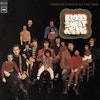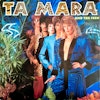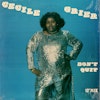There are a few things to know about Erykah Badu. First, she lives on a different plane. One that only true-blue, dyed-in-the-wool artists inhabit. From the moment she hit with 1997’s Baduizm, it was clear that this lithe woman with the high headdress belonged to a different class. Critics said she sang like Billie Holiday, which she did and she didn’t. Her music wasn’t hip-hop, and it wasn’t soul, and it wasn’t R&B, so they had to invent a term: neo-soul. Former Motown president Kedar Massenburg, who discovered Badu, coined that term to describe her and a movement of similar artists like D’Angelo and Lauryn Hill.
Second thing is, she’s weird. This is a woman who once said her fantasy man is Batman and that the concept of time is for White people. But she’s weird in the way that Einstein was weird, and the way that Prince is weird, and the way that all people who possess creative genius are weird.
Third, she is confident and charming as hell. Badu knows that songs like “Tyrone” have inspired a generation of women, and albums like Mama’s Gun have changed the musical landscape. She knows that her fashion sense, spiritual beliefs, and music videos—which she directs herself—resonate with millions of people. And she’s okay with that.
Our conversation is punctuated by the laughter of her children in the background, a reminder that Badu is a mother on top of everything else. In the middle of her first answer, Badu pauses and says, “Wax Poetics is one of my favorite magazines ever. You know how people used to have Jet magazine spread on their table? I got all the Wax Poetics covers.” Maybe she’s being serious, or maybe it’s just part of the charm. The performer laying it on thick. But then again, Badu isn’t known for glad-handing. Part of her success is due, no doubt, to the fact that she is brutally honest, especially in her music. In March, Badu released New Amerykah Part Two: Return of the Ankh. It is the second volume documenting a creative wet season during which Badu was working with producers like Madlib and Karriem Riggins and writing several songs a day.
A few themes come up a lot when researching your life and career. One is duality. You are a mother and a musician. Your music is part hip-hop and part soul. You have a real name and a stage name. Your stage name, Erykah, has the Egyptian symbol “ka” in it, which refers to a spiritual double. What’s your take on that?
I’m a Pisces. I guess there are two sides of me. There’s a little girl, and there’s a very, very old woman. No in-between. A little naïve girl and a very wise old woman.
Other artists—like Questlove, Common, Andre 3000, D’Angelo, and Jill Scott—play a large role in your life. And most of those artists came up with you in the so-called neo-soul movement. What is the state of that movement now?
I think that it still exists. We are still here. We are still multiplying. Mama’s Gun set many children out in the world, and I see them manifesting whatever it is. I don’t know what it’s called, what the movement is called. To me, it’s the funk movement, you know? That’s what it is to me—it’s the funk. They called it neo-soul, but they mistitled it. I would rather be neo-funk. It’s the thing we all have, and a lot of us who you named, our music doesn’t sound alike, really. We use musicians in common, which makes us sound alike, but we have totally different viewpoints and come from different places, musically. I think what we have in common is that thang, and it has an a in it. It’s a thang that you can’t really put your finger on. It’s a DNA thang.
I agree that you don’t sound alike, but one thing you all have in common is a deep knowledge of music, soul and R&B music in particular. You are on the cutting edge of hip-hop, but you also know where hip-hop came from.
We all know that hip-hop is people. We are hip-hop. And another thing is we have the same kind of—I don’t know—it’s a tribe almost. A foundation. We all collect records. We love music. We are serious about it. We do it whether we get paid or not. We collect wax. We share it. We are all, I feel, very giving when it comes to our art—selfishly giving—and very honest. Those are all the elements I see that we have in common.
Hair is another theme that runs through your career. For Black artists especially, it seems like hair has always been more than just a stylistic thing. It implies a deeper statement, from dreads to Afros and beyond.
It’s a political statement.
And when you first came out, you had the headdress, later the big Afro, and a few changes in between. You seem to have a clear idea of the symbolism of hair.
Can I ask you a question before I answer it?
Of course.
I see different singers and musicians changing their hair all the time. Why is it such a big deal when I do it? What makes it a bigger event? Because everybody wants to know what she going to do with her hair next?
Well, to me, those artists are doing it from a stylistic perspective. But I get the sense that you put more thought into it than that. Maybe not. I just wanted to find out.
You know what? It’s just where I am at the time. I think it has meaning for all of us. I change it often, and what’s common with it is that it’s all natural. I’ve never changed the texture of it or put chemicals on it to change what that is. To me, my hair is my antenna. I feel like I’m getting some kind of signals through these follicles.
There’s even biblical significance to it. Samson’s power was in his hair.
Yeah, but I guess my power is in my belief more than in my hair. And those statements are just for you to enjoy aesthetically. Hair plays a great part in having a platform and choosing to be a recording artist. There once was no such thing as video. There was only an album cover. When I’m walkin’ and dressin’, I’m thinking about album covers that I looked at. There was no misunderstanding what this artist was going to do today or tomorrow, because the album covers said it all. That’s all you had. That’s who they were. This one white leather suit with rhinestones on it is all you gon’ get for a while until something else come out. And it told the story of the whole album—where they were, who they were in time, how they felt, how cool they were, how cool they weren’t. All I know about Bootsy is he’s a cool motherfucker, because look what he got on. To me, that’s the art of illusion when it comes to having this platform as an artist. You can create any kind of persona you want, and it means so much to me to be able to change that focus from time to time.
The new album is subtitled Return of the Ankh. What’s the significance of the ankh?
The ankh has been the staple in my music since 1997. In Baduizm, the ankh is on the CD itself. In 1997, when it came out, I was wearing an ankh on my hand, and I had a tattoo painted on my shoulder. Millions of women after that had ankhs tattooed on their bodies because of the simple meaning. And they knew the meaning because when I came out with Live that same year, in November, I explained exactly what it was. On that album, it explains that an ankh is an ancient Kemetic word that means life. It means eternal life. It means the return to life. That word means all of those things. It means being sad, it means being full of joy, it means being afraid. It’s just a word that encompasses all of those emotions in one. I just thought it was important. By that time, in November, I had grown very close to the audience, because I didn’t even know I had a style or nothing until I got a record deal. But by that time, I wanted to share everything I had learned. I figured, “Hey, this is a platform.” And I took that responsibility very seriously. The reason why this album is called Return of the Ankh is because it’s a reminder of that. Let’s go back to when I was just Erykah Badu who just came out with a head wrap, and there were no preconceived notions. There was no pointing fingers. It was all about the music. It was all about the music and the love and the intention.
I read that you worked with several underground hip-hop producers for Return of the Ankh, like Madlib and Karriem Riggins. Who else did you work with, and how did it affect the album?
Oh, you haven’t did your research, huh? You going to make me do all the work, Travis. Well, New Amerykah Part One and Two is two parts of the same place I was in. Part One is the left-brain feeling of where I was. Listen to New Amerykah Part One—it’s social, analytical, political, psychoanalytical. Part Two is the very emotional part of it, the inner me. The little-girl me. Part One is the woman me. The elder.
I did read about that.
You did read that. [laughs]
I’m just wondering how did these different producers change the outcome?
I’m long-winded. I’m getting to it. [laughs] Madlib is my friend and so is Dilla and so is Karriem Riggins, the drummer and producer. And so is the group Sa-Ra, who is also on the project. Georgia Anne Muldrow, who is also on the project. Jah Born, who did “On and On” and “On and On Part Two,” who is also on the project. And this new dude I just met through some cats in L.A.; his name is Ta’Raach. He’s also on the project. And of course Questlove and James Poyser, who is a staple in my music.
Poyser’s name comes up a lot in your work.
Yeah, that’s my studio husband. We finish each other’s musical statements and sentences. He’s my beloved friend and companion, musically. I did all these songs between 2003 and 2008 or 2009, because I had just come out of what people call writer’s block. Worldwide Underground was the process of trying to come out of that. But what I found out is that there’s no such thing as writer’s block. It’s just a downloading period—a time when you’re supposed to be learning, moving, procrastinating, creating, making mistakes, and fixing them, so you have some inspiration. It was a data-gathering time. I hope no artist feels that they have writer’s block, because they can probably psych themselves into thinking that that’s what it is. And they won’t get the lessons that they’re supposed to get during that time [because they’re] so busy being worried about writer’s block or creative block. There’s no such thing. I’m a witness to that. When I found that out, I was relieved, and music started flowing out of me like a waterfall. I was moving so fast that I didn’t have time to compose music, so I started taking tracks that I admired from different friends of mine—like Madlib—and put it right in GarageBand. And I’m writing four songs a day off of Madlib’s mixtape beats, and I’m writing three songs a day from Dilla’s mixtapes that I’ve had since they were cassette tapes. And then I get on iChat and I’m talking to different people—Q-Tip and Mos Def and everybody— “Send me some tracks, y’all. Send me tracks. I’m writing my ass off here. Give me some tracks.” The more tracks they sent, the more I wrote and wrote and wrote. I did all this in GarageBand, and by the time it was over, I had so many songs. I want to say in the fifties or sixties. Every time I tell this story, the number gets bigger. I had seventy-nine songs….
[laughs] Hundreds.
Yeah, 176 songs. I had so much to say, and I split it in two pieces. I could have split it in four pieces, but I decided to split it in two pieces. There may be a New Amerykah Part Three. You never know, because there’s just so much left from that stuff. So much beautiful residue, sweet smellin’. And my album artwork, man, is amazing. I think that’s what Wax Poetics is about too. Just the classic pieces. I think I really met my visual artistic husband too. His name is Emek, and he is a rock poster artist, among other things. We worked together for the past seven years. He’s the one that I want to represent me. The name of the piece of art on the front cover is called Out My Mind, Just in Time. It’s a piece that the girl is covered in armor. She doesn’t want her heart to be broken ever again, so she will never open it up again, and she has a hard shell around her. And something happens, and a paradigm shift begins to occur, some event and circumstance. And if you listen to New Amerykah Part Two, you’ll hear these events and circumstances unfold. Part One talks about the hardening, how she became petrified. Part Two talks about the opening. How the layers come off.
The way you came out of that writer’s block is interesting. You did the Frustrated Artist Tour in 2003. Is live performance a creative experience for you rather than just singing songs that are already written?
It’s actually therapy to me. The stage is like a couch. It gives me a chance to close my eyes and get it all out, vibrationally. I focus it into good energy, because I don’t want to push out a lot of bad stuff or good stuff on anybody. I want people to have they own shit. I just focus it into positive energy to be used for however. And for some reason, the audience and me and the band become one living organism, breathing back and forth. That’s how I imagine it. It feels that way. It looks that way. And when we all leave, we leave satisfied. And I’m standing on the stage until I feel like that.
Erykah Badu will be performing at the Cross The Tracks festival, happening in London, 26th May.

